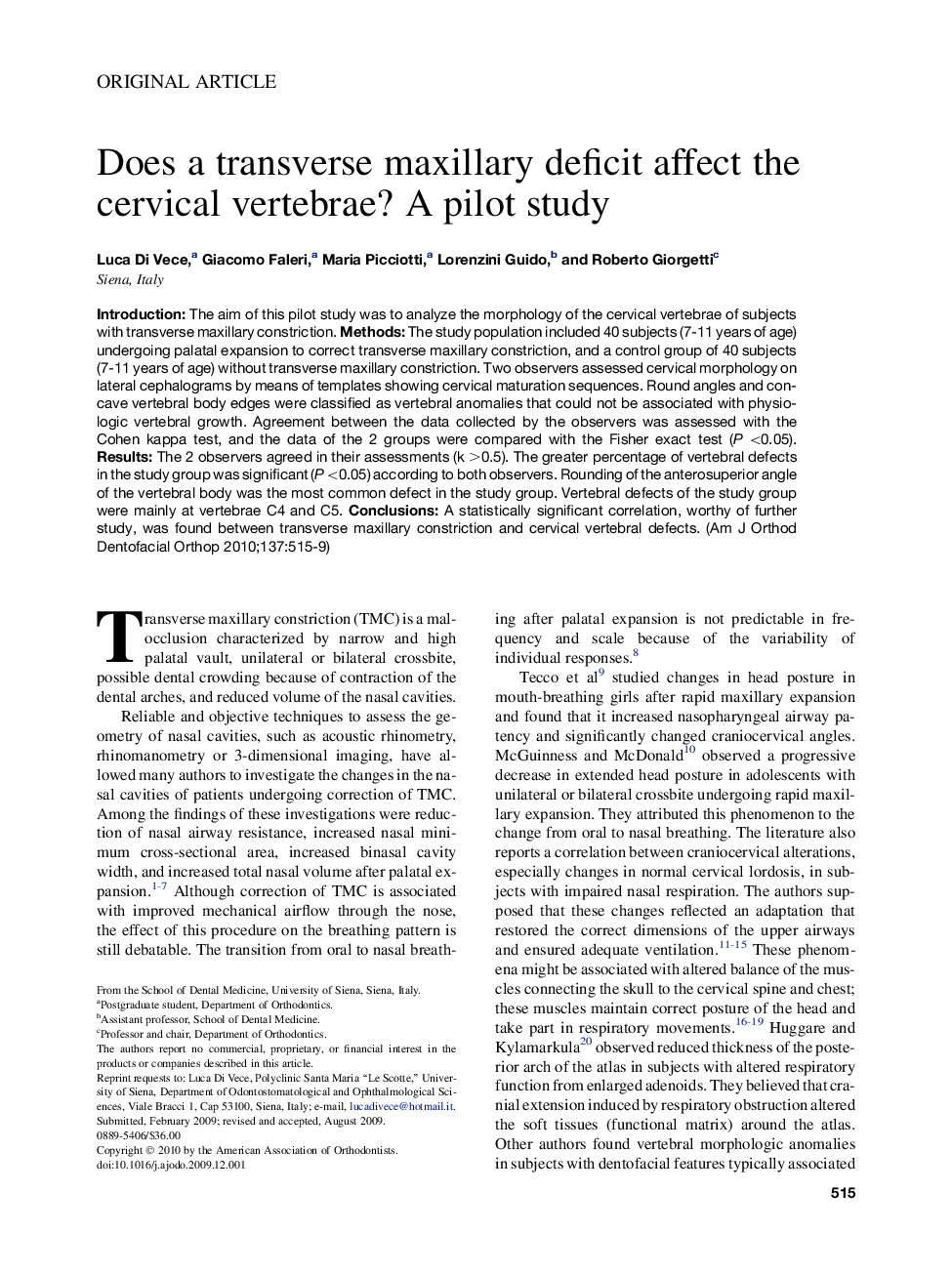| Article ID | Journal | Published Year | Pages | File Type |
|---|---|---|---|---|
| 3117659 | American Journal of Orthodontics and Dentofacial Orthopedics | 2010 | 5 Pages |
IntroductionThe aim of this pilot study was to analyze the morphology of the cervical vertebrae of subjects with transverse maxillary constriction.MethodsThe study population included 40 subjects (7-11 years of age) undergoing palatal expansion to correct transverse maxillary constriction, and a control group of 40 subjects (7-11 years of age) without transverse maxillary constriction. Two observers assessed cervical morphology on lateral cephalograms by means of templates showing cervical maturation sequences. Round angles and concave vertebral body edges were classified as vertebral anomalies that could not be associated with physiologic vertebral growth. Agreement between the data collected by the observers was assessed with the Cohen kappa test, and the data of the 2 groups were compared with the Fisher exact test (P <0.05).ResultsThe 2 observers agreed in their assessments (k >0.5). The greater percentage of vertebral defects in the study group was significant (P <0.05) according to both observers. Rounding of the anterosuperior angle of the vertebral body was the most common defect in the study group. Vertebral defects of the study group were mainly at vertebrae C4 and C5.ConclusionsA statistically significant correlation, worthy of further study, was found between transverse maxillary constriction and cervical vertebral defects.
